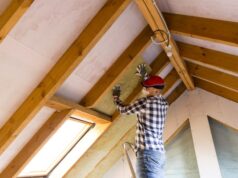
If you’re renovating and want to future-proof your home, installing solar panels is one of the smartest moves you can make. With energy prices on the rise and modern systems offering better performance and reliability than ever before, solar power is no longer just for early adopters — it’s fast becoming a standard feature in Australian homes.
Here’s what renovators need to know before installing solar photovoltaic (PV) panels.
How solar panels work
Solar panels convert sunlight into electricity using what’s known as the photovoltaic effect. When sunlight hits the silicon cells in a panel, it frees electrons, which flow through an electrical circuit to generate direct current (DC) electricity. This electricity is then sent to an inverter, where it’s converted into alternating current (AC) for use in your home.
Why choose solar during a renovation?
Renovating is the perfect time to add solar. You can plan the system layout early, integrate it into your electrical design and ensure any roof or structural upgrades will support the system long term.
Some of the biggest advantages include:
- Lower power bills: Solar panels can significantly reduce electricity costs, especially when paired with an energy-efficient design.
- Energy independence: Many renovators are choosing solar to reduce reliance on the grid or prepare for future battery storage.
- Increased home value: Solar panels are a popular resale feature and can add value to your property.
Key system components
- Panels: These come in various sizes and efficiencies. Modern mono-crystalline panels are the most common, offering high output in a compact footprint.
- Inverter: Converts solar power into usable energy. You can choose between a single inverter (string system), micro-inverters (one per panel) or hybrid systems that work with batteries.
- Mounting system: For roof-mounted panels, the mounting system needs to suit your roof pitch and structure. If your roof isn’t suitable, you might consider a ground-based solar array.
Installation tips for renovators
When designing your solar setup, keep the following in mind:
- Orientation and tilt: In Australia, north-facing panels are ideal. Panels tilted at around 30°–35° generally offer good year-round performance.
- Shading: Even small amounts of shade can affect performance, so plan your roof space carefully, especially if installing skylights or air conditioning units.
- Wiring and inverter location: Your inverter should be installed in a cool, sheltered area and as close to your switchboard as possible to reduce energy loss.
- Future add-ons: If you’re considering a battery later on, make sure the inverter you choose is battery-compatible.
What will it cost?
Costs can vary depending on your home, roof structure and chosen components, but a standard 6.6kW solar system typically costs between $5,000 and $9,000 after government rebates. Larger systems and battery-ready options may increase the price, but also offer a faster return on investment.
For current incentives and support, check out our guide to solar panel rebates.
Maintenance and lifespan
Solar panels require minimal maintenance. Cleaning them a couple of times a year to remove dust, dirt and leaves will help maintain performance. Most modern panels come with 25-year performance warranties, while inverters typically last 10 to 15 years.
After major storms or extreme weather, it’s a good idea to have the system inspected for any damage.
Final advice
If you’re including solar in your renovation, plan early. Work with a Clean Energy Council-accredited installer and discuss your goals — whether that’s reducing energy bills, prepping for a battery or even going fully off-grid in future.
Solar is a long-term investment. When installed properly and maintained well, it can provide decades of clean, renewable energy — and peace of mind that your home is ready for the future.





